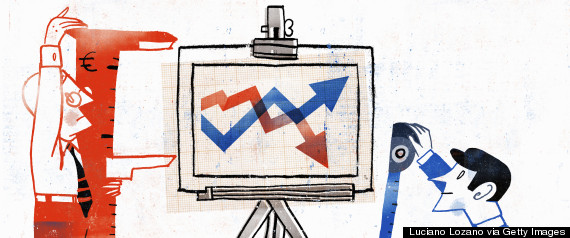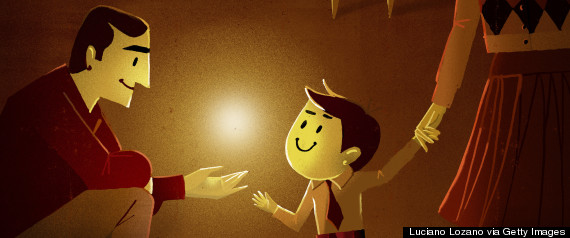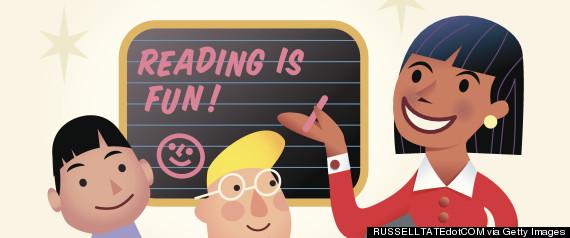WHY STUDY IN USA ?
USA, the country which has experimented with democracy for more than 200 years is strong economically as well as culturally today with the base being the immigrants.
Global Edge:
The United States has more institutions of higher education than any other country, but despite the numbers it is the quality of education provided by these academic bodies which is acknowledged worldwide. The teaching forces of these institutions are leading authorities in their respective fields. The quality of the research program along with the resources available and the faculty ensures that the institutions have high standards.
Choice:
More than 4000 institutions offer undergraduates, post graduates, masters and doctorate degrees.One can specialize in any desire areas of focus. The USA education system has variety of academic & social environments which allow the student to build up in all aspects.
Financial Assistance
The education definitely falls in the category of value for your money. USA education is the best investment for the future. A wide spectrum of tuition fees accommodation options & financial help from the institutions in the form of scholarships, fee waivers, aid etc makes USA education affordable.
Technology & Research:
USA is known for its latest technologies and advancement in technical fields which gives the student a very good chance to make his/her future in these fields. USA has always been a hub of inventions. Students therefore have first hand knowledge about cutting edge technologies coupled with excellent research opportunities.
Flexibility:
The USA education system is flexible in terms of choice of courses within a college or university. During the course of study, a student can transfer from one course/stream to another or one institution to another. This aspect of the USA education system makes it distinct from other countries.
Affordable:
International students from all over the world choose to study in the USA because an American education is the best preparation for their future. It becomes all the more within your means with financial aid, scholarships and assistantships on hand. At the same time students are allowed to work 20hr/wk during their course and 40hr/wk during vacation which helps them to earn and learn.
Top Ranking Institution:
Amongst the top ranking colleges world-wide, majority of them are in USA. These colleges and universities rank high in world rakings because of their infrastructure, technological Advancement and top quality of education provided by them.
Professional Approach:
The best approach of the USA education system, is that it allows one to learn and earn. This not only gives one, a thorough knowledge of the subjects, but also teaches one to have a practical & professional approach. It gives better growth prospects worldwide.
STUDY IN TOP UNIVERSITIES IN USA
Education Chart
USA has the world’s most flexible education system, students can study their area of interest as specialization. As the education system of USA is not centralized each institute can determine its program and admission standards. Lateral movement in the education system is possible any time.
Types of Institution
Public Universities in USA:
State-affiliated institutions financially supported by public taxes, usually large in size. All levels of degrees with different fields of study are offered. Public colleges and universities are relatively easy on the pocket for residents of a state where the schools are located. Foreign students pay "out-of-state" tuition, which is higher. There are many notable public universities across the country just a few examples: Pennsylvania State University, Ohio State University, University of California, Kansas State University, University of Texas
Private Universities in USA:
Private Institutions run without the control of the Government entity. Tuition fees of these institutions are on the higher but the international as well the domestic students pay the same amount of fees. The notable private institutions are Long Island University, George Washington University, New York University, Carnegie Mellon University.
Technical Institutes in USA:
These are schools emphasizing principally on engineering and science they are known for their research and graduate programs. Most International students who attend these schools are of graduate level. Undergraduates admitted to these schools usually have incredibly strong backgrounds in math and sciences, as witnessed by grades and standardized test scores (e.g. SAT or GRE). M.I.T. (the Massachusetts Institute of Technology), Cal Poly (California Polytechnic Institute), Georgia Tech (Georgia Institute of Technology), NYIT New York Institute of Technology) and W.P.I. (Worcester Polytechnic Institute) are a few of the noted schools.
The Ivy League:
These schools are the oldest and most famous in the country members of the Ivy League are: Harvard, Yale, Princeton, Brown, Dartmouth, Cornell, Columbia, and the University of Pennsylvania. They are in the Northeastern part of the USA. Ivy League colleges stress undergraduate liberal arts education, but they also have noted graduate and professional schools. Tuitions at these private schools is among the highest in the country, and admission is generally highly competitive.
Small Liberal Arts Colleges:
Generally have the focus on undergraduate study of the traditional arts and science disciplines: humanities, sciences, and social sciences. Strictly liberal arts colleges are often quite old and mostly private schools. They are highly-rated institutions as they stress on small classes, individual attention to the students, and closer relationships between the faculties and students. Many of them also generally have rigid admission standards. Among these schools are: Amherst, Marist, Swarthmore, Manhattan, Smith, Mount Holyoke.
Community Colleges in USA:
More over known as County Colleges or City colleges. Community colleges provide higher education and lower level tertiary education, granting certificates, diplomas and Associates Degree. Some notable community colleges are Ohlone College, De Anza College & Bellevue Community College.
Grading System in USA
The GPA system is followed throughout the United States to judge student's performance. It is graded on the scale of 0 to 4. Following is the evaluation of GPA
Grade Points
Grade Points
Equivalent
>4
>A
High Achievement
>3
>B
Satisfactory
>2
>C
Minimum Passing
>1
>D
Failure
Types of degree
Associate Degree to Study in USA:
It is an academic degree awarded by the community colleges, junior colleges, business colleges and some bachelor's degree upon completion of a course of study Usually for two years (60 Credits). In the USA , an associate degree is equivalent to the first two years of a four year college or university Bachelors degree. It is The lowest in hierarchy of post secondary academic degrees offered in USA.
Bachelors Degree to Study in USA:
Commonly known as Undergraduate degree in India. The duration of the bachelors course is 4 years. Students who have completed a part of their undergraduate degree and want to go to the USA, can apply as a transfer Student. There are two types of bachelors degree: B.A or B.S. Some universities in the USA Offer either of the degrees in all fields and at times both the degrees in some field. Students need to appear for SAT & TOEFL/IELTS exams for admission.
Masters Degree to Study in USA:
The duration of master’s courses may range from a year to two depending on the university & your area of specialization. The binding requisite for Masters is the 16 year of education Criteria. Students with Bachelors in engineering are qualified whereas the students with B.Com, B.Sc, and B.A need to complete at least one year of Masters, post graduate diploma is also accepted by some specific institutions for specific programs. Exams required are GMAT for management related subjects / GRE for arts, science or any other subjects and TOEFL/ IELTS exams for admission.
Doctorate to Study in USA:
Commonly known as PhD. Duration of the same may range from 3 years to 5 years. Students can take admission for a PhD only after completion of their master's degree. PhD students need to submit a research proposal as well have to appear for GRE/GMAT & TOEFL/IELTS exams for admissions.
STUDY IN TOP UNIVERSITIES IN USA
Tuition Fees to Study in USA
USA (PUBLIC)
TUITION FEES TUITION FEES IN Rs.
UG 8000 - 15000 US $
Rs. 4,00,000 - Rs. 7,50,000 / Year
PG 10000 - 20000 US $ Rs. 5,00,000 - Rs. 10,00,000 / Year
USA (PRIVATE)
TUITION FEES TUITION FEES IN Rs.
UG
10000 - 20000 US $ Rs. 5,00,000 - Rs. 10,00,000/ Year
PG 15000 - 25000 US $ Rs. 7,50,000 - Rs. 12,50,000 / Year
Living Expenses to Study in USA
When calculating the cost of education living expenses play a critical role. On an average, a student spends Approx $10000 – 12000/year. But the expenses also depend on the place where a student stays i.e. if a student stays in metropolitan city like New York, San Francisco, Manhattan, etc the expenses could go up to $15000 in comparison to a student studying in a suburban area where the expenses around $8000 to $10000 / year.
Accomodation
Most of the educational institutions in USA will assist you in finding accommodation while studying in USA. Accommodation are of two types i.e. a student can stay on campus (Halls of Residence/Students hostel) or Off Campus (Home stay, Apartments/Flats). Staying Off Campus is much more cheaper than staying On Campus but it is always advisable that the student should stay on campus for the first six months.
Health Insurance
Insurance Policy for international students is a mandatory, as students have to stay abroad for a long period of time. Insurance costs generally between $500-$1000/year. It is advisable to take insurance from an Indian Insurance Company but make sure that it covers medical expenses, personal accident, dental, treatment ,study interruption, passport loss etc. Insurance is basically cashless so a student does not need to pay money at the time of hospitalization.
Scholarships to Study in Top University in USA
Scholarships & financial aids - fee waivers are awarded to international students on the criteria of merit & need of it. Candidate with strong academics, good performance on standardized exams & extra curricular achievements would be eligible for scholarship awards & financial assistance. To benefit from these opportunities, one has to make sure to send all the required documents by particular deadlines. In addition to this, the presentation of the application package is also important because one is judged by the image one projects.
There are various types of Scholarships:
Fellowship-Scholarship: This is usually offered on the student’s ability, competence & performance.
Graduate Assistantship: Generally it may involve a teaching or research assistantship. Students receive aid, in the form of cash stipend or a tuition fee waiver or reduced tuition fee.
Sports Scholarship: Though seldom offered to international students, athletic or sports scholarships are available in a wide range to outstanding and talented athletes.
The other factor that can enhance the probability of getting the scholarship is the credit evaluation. The evaluation converts the Indian grades in the GPA system.
USA, the country which has experimented with democracy for more than 200 years is strong economically as well as culturally today with the base being the immigrants.
Global Edge:
The United States has more institutions of higher education than any other country, but despite the numbers it is the quality of education provided by these academic bodies which is acknowledged worldwide. The teaching forces of these institutions are leading authorities in their respective fields. The quality of the research program along with the resources available and the faculty ensures that the institutions have high standards.
Choice:
More than 4000 institutions offer undergraduates, post graduates, masters and doctorate degrees.One can specialize in any desire areas of focus. The USA education system has variety of academic & social environments which allow the student to build up in all aspects.
Financial Assistance
The education definitely falls in the category of value for your money. USA education is the best investment for the future. A wide spectrum of tuition fees accommodation options & financial help from the institutions in the form of scholarships, fee waivers, aid etc makes USA education affordable.
Technology & Research:
USA is known for its latest technologies and advancement in technical fields which gives the student a very good chance to make his/her future in these fields. USA has always been a hub of inventions. Students therefore have first hand knowledge about cutting edge technologies coupled with excellent research opportunities.
Flexibility:
The USA education system is flexible in terms of choice of courses within a college or university. During the course of study, a student can transfer from one course/stream to another or one institution to another. This aspect of the USA education system makes it distinct from other countries.
Affordable:
International students from all over the world choose to study in the USA because an American education is the best preparation for their future. It becomes all the more within your means with financial aid, scholarships and assistantships on hand. At the same time students are allowed to work 20hr/wk during their course and 40hr/wk during vacation which helps them to earn and learn.
Top Ranking Institution:
Amongst the top ranking colleges world-wide, majority of them are in USA. These colleges and universities rank high in world rakings because of their infrastructure, technological Advancement and top quality of education provided by them.
Professional Approach:
The best approach of the USA education system, is that it allows one to learn and earn. This not only gives one, a thorough knowledge of the subjects, but also teaches one to have a practical & professional approach. It gives better growth prospects worldwide.
STUDY IN TOP UNIVERSITIES IN USA
Education Chart
USA has the world’s most flexible education system, students can study their area of interest as specialization. As the education system of USA is not centralized each institute can determine its program and admission standards. Lateral movement in the education system is possible any time.
Types of Institution
Public Universities in USA:
State-affiliated institutions financially supported by public taxes, usually large in size. All levels of degrees with different fields of study are offered. Public colleges and universities are relatively easy on the pocket for residents of a state where the schools are located. Foreign students pay "out-of-state" tuition, which is higher. There are many notable public universities across the country just a few examples: Pennsylvania State University, Ohio State University, University of California, Kansas State University, University of Texas
Private Universities in USA:
Private Institutions run without the control of the Government entity. Tuition fees of these institutions are on the higher but the international as well the domestic students pay the same amount of fees. The notable private institutions are Long Island University, George Washington University, New York University, Carnegie Mellon University.
Technical Institutes in USA:
These are schools emphasizing principally on engineering and science they are known for their research and graduate programs. Most International students who attend these schools are of graduate level. Undergraduates admitted to these schools usually have incredibly strong backgrounds in math and sciences, as witnessed by grades and standardized test scores (e.g. SAT or GRE). M.I.T. (the Massachusetts Institute of Technology), Cal Poly (California Polytechnic Institute), Georgia Tech (Georgia Institute of Technology), NYIT New York Institute of Technology) and W.P.I. (Worcester Polytechnic Institute) are a few of the noted schools.
The Ivy League:
These schools are the oldest and most famous in the country members of the Ivy League are: Harvard, Yale, Princeton, Brown, Dartmouth, Cornell, Columbia, and the University of Pennsylvania. They are in the Northeastern part of the USA. Ivy League colleges stress undergraduate liberal arts education, but they also have noted graduate and professional schools. Tuitions at these private schools is among the highest in the country, and admission is generally highly competitive.
Small Liberal Arts Colleges:
Generally have the focus on undergraduate study of the traditional arts and science disciplines: humanities, sciences, and social sciences. Strictly liberal arts colleges are often quite old and mostly private schools. They are highly-rated institutions as they stress on small classes, individual attention to the students, and closer relationships between the faculties and students. Many of them also generally have rigid admission standards. Among these schools are: Amherst, Marist, Swarthmore, Manhattan, Smith, Mount Holyoke.
Community Colleges in USA:
More over known as County Colleges or City colleges. Community colleges provide higher education and lower level tertiary education, granting certificates, diplomas and Associates Degree. Some notable community colleges are Ohlone College, De Anza College & Bellevue Community College.
Grading System in USA
The GPA system is followed throughout the United States to judge student's performance. It is graded on the scale of 0 to 4. Following is the evaluation of GPA
Grade Points
Grade Points
Equivalent
>4
>A
High Achievement
>3
>B
Satisfactory
>2
>C
Minimum Passing
>1
>D
Failure
Types of degree
Associate Degree to Study in USA:
It is an academic degree awarded by the community colleges, junior colleges, business colleges and some bachelor's degree upon completion of a course of study Usually for two years (60 Credits). In the USA , an associate degree is equivalent to the first two years of a four year college or university Bachelors degree. It is The lowest in hierarchy of post secondary academic degrees offered in USA.
Bachelors Degree to Study in USA:
Commonly known as Undergraduate degree in India. The duration of the bachelors course is 4 years. Students who have completed a part of their undergraduate degree and want to go to the USA, can apply as a transfer Student. There are two types of bachelors degree: B.A or B.S. Some universities in the USA Offer either of the degrees in all fields and at times both the degrees in some field. Students need to appear for SAT & TOEFL/IELTS exams for admission.
Masters Degree to Study in USA:
The duration of master’s courses may range from a year to two depending on the university & your area of specialization. The binding requisite for Masters is the 16 year of education Criteria. Students with Bachelors in engineering are qualified whereas the students with B.Com, B.Sc, and B.A need to complete at least one year of Masters, post graduate diploma is also accepted by some specific institutions for specific programs. Exams required are GMAT for management related subjects / GRE for arts, science or any other subjects and TOEFL/ IELTS exams for admission.
Doctorate to Study in USA:
Commonly known as PhD. Duration of the same may range from 3 years to 5 years. Students can take admission for a PhD only after completion of their master's degree. PhD students need to submit a research proposal as well have to appear for GRE/GMAT & TOEFL/IELTS exams for admissions.
STUDY IN TOP UNIVERSITIES IN USA
Tuition Fees to Study in USA
USA (PUBLIC)
TUITION FEES TUITION FEES IN Rs.
UG 8000 - 15000 US $
Rs. 4,00,000 - Rs. 7,50,000 / Year
PG 10000 - 20000 US $ Rs. 5,00,000 - Rs. 10,00,000 / Year
USA (PRIVATE)
TUITION FEES TUITION FEES IN Rs.
UG
10000 - 20000 US $ Rs. 5,00,000 - Rs. 10,00,000/ Year
PG 15000 - 25000 US $ Rs. 7,50,000 - Rs. 12,50,000 / Year
Living Expenses to Study in USA
When calculating the cost of education living expenses play a critical role. On an average, a student spends Approx $10000 – 12000/year. But the expenses also depend on the place where a student stays i.e. if a student stays in metropolitan city like New York, San Francisco, Manhattan, etc the expenses could go up to $15000 in comparison to a student studying in a suburban area where the expenses around $8000 to $10000 / year.
Accomodation
Most of the educational institutions in USA will assist you in finding accommodation while studying in USA. Accommodation are of two types i.e. a student can stay on campus (Halls of Residence/Students hostel) or Off Campus (Home stay, Apartments/Flats). Staying Off Campus is much more cheaper than staying On Campus but it is always advisable that the student should stay on campus for the first six months.
Health Insurance
Insurance Policy for international students is a mandatory, as students have to stay abroad for a long period of time. Insurance costs generally between $500-$1000/year. It is advisable to take insurance from an Indian Insurance Company but make sure that it covers medical expenses, personal accident, dental, treatment ,study interruption, passport loss etc. Insurance is basically cashless so a student does not need to pay money at the time of hospitalization.
Scholarships to Study in Top University in USA
Scholarships & financial aids - fee waivers are awarded to international students on the criteria of merit & need of it. Candidate with strong academics, good performance on standardized exams & extra curricular achievements would be eligible for scholarship awards & financial assistance. To benefit from these opportunities, one has to make sure to send all the required documents by particular deadlines. In addition to this, the presentation of the application package is also important because one is judged by the image one projects.
There are various types of Scholarships:
Fellowship-Scholarship: This is usually offered on the student’s ability, competence & performance.
Graduate Assistantship: Generally it may involve a teaching or research assistantship. Students receive aid, in the form of cash stipend or a tuition fee waiver or reduced tuition fee.
Sports Scholarship: Though seldom offered to international students, athletic or sports scholarships are available in a wide range to outstanding and talented athletes.
The other factor that can enhance the probability of getting the scholarship is the credit evaluation. The evaluation converts the Indian grades in the GPA system.



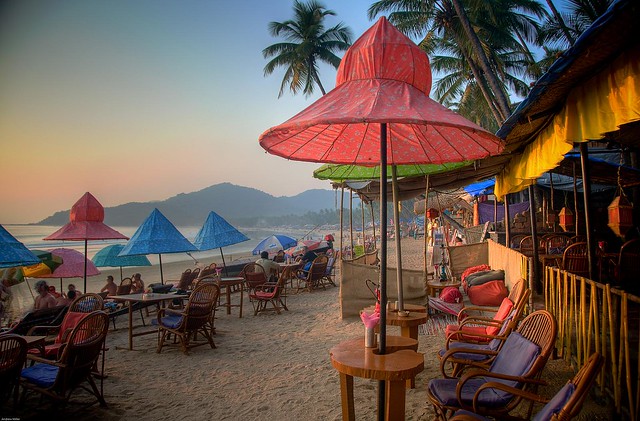

 flickr/
flickr/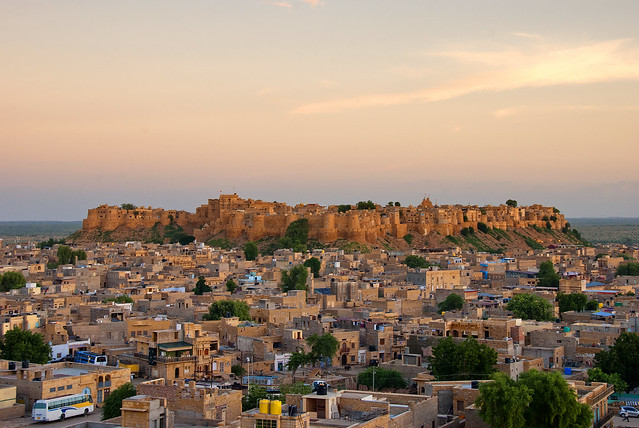
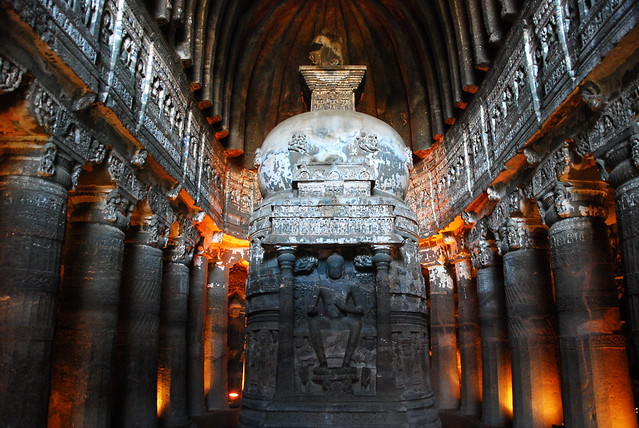
 flickr/
flickr/



























